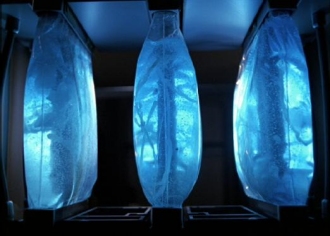
The bio-neural gel pack is essentially an organic computer system that was used by Federation starships in the Star Trek: Voyager series. The packs contain neural fibers surrounded in a blue gel which stored more information and operated at faster speeds than conventional isolinear circuitry. Like an organic brain, the fibers in an individual gel pack are capable of making billions of neural connections, allowing computers to 'think' in very similar ways to living organisms by using 'fuzzy logic'. The USS Voyager was one of the first Federation vessels equipped with the technology.

To the naked eye, the DNA computer looks like clear water solution in a test tube. The machine's "hardware" consists of enzymes, which cleave specific sequences of DNA at specific points. To ensure that the enzymes cut correctly, eight kinds of DNA fragments--the "software"--take turns attaching to the DNA that's added as input data. To assemble the machine, the researchers mix trillions of both enzyme and DNA molecules together with water. Once the 'computer' finishes reading and cutting the input DNA, a specific detector DNA molecule in the solution latches on, and the researchers determine the result by electrophoresis. Researchers from the Weizmann Institute of Science in Israel have already contructed a programmable molecular computing machine composed of enzymes and DNA molecules capable of diagnosing cancerous activity within a cell, and then releasing an anti-cancer drug upon diagnosis.


The Adleman' DNA computer's solution to
the seven-point Hamiltonian path problem.